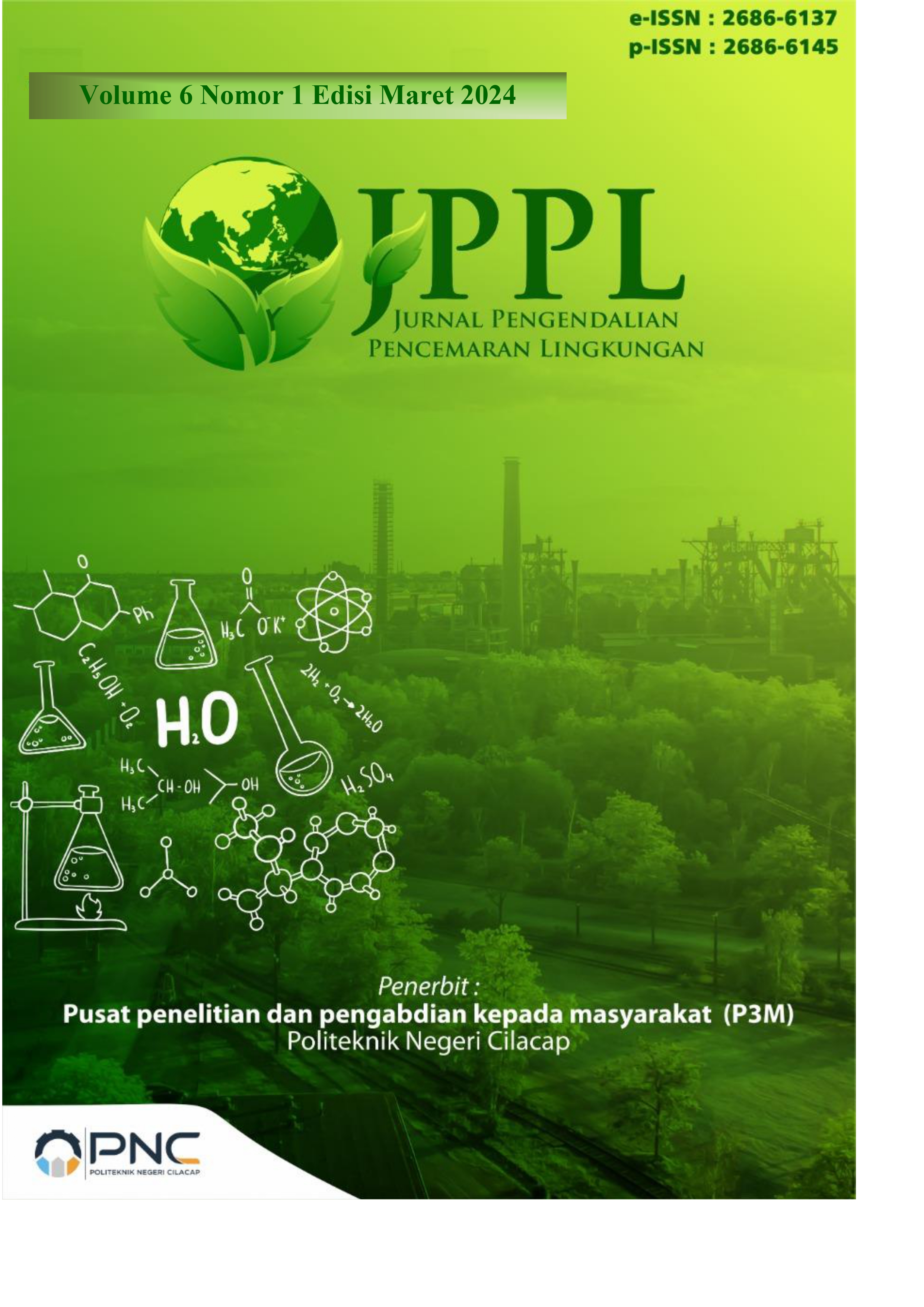Variasi Lama Waktu Elektrokoagulasi dan Filtrasi Terhadap Degradasi Kadar COD pada Limbah Cair Rumah Sakit
 Abstract views: 284
,
Abstract views: 284
,
 pdf downloads: 338
pdf downloads: 338
Abstract
Hospital wastewater is a source of environmental pollutants derived from medical services, including domestic waste and clinical waste from various rooms, so an appropriate treatment system is needed. X hospital wastewater has an average COD level of 101.69 mg/L. The purpose of this study was to determine the effectiveness of electrocoagulation and filtration exposure in reducing COD levels in hospital wastewater. This study uses an experimental method by measuring the dependent variable before and after treatment, but without using a control group. There are 3 treatments with a duration of 10 minutes, 15 minutes and 20 minutes with 6 repetitions. The sampling technique used was grab sampling with 36 samples. The results of laboratory examinations show that the electrocoagulation and filtration methods can degrade COD levels with an average percentage reduction in 10 minutes of 70.54%, the percentage reduction in COD levels in 15 minutes of 73.47%, and 77.80% for 20 minutes. Statistical tests using anova obtained a value of p = 0.009, it can be concluded that there is a significant difference in the length of time of electrocoagulation. So that electrocoagulation and filtration methods can be implemented in degrading COD levels in hospital wastewater.
Copyright (c) 2024 Salsabila Rahmawati, Muhamad Iqbal, Neneng Yetty Hanurawati, Redi Yudha Irianto

This work is licensed under a Creative Commons Attribution 4.0 International License.

















